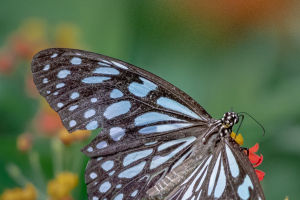Soft body, five short horns, they are of different colors and sizes, this is the starfish living in the sea. The starfish is not big, and there are no very sharp weapons anywhere in the body. Maybe many people are not unfamiliar with the appearance of starfish, but they do not know much about them.
This creature that grows in the sea and only occasionally appears on the beach seems to hide many unknown secrets. So now let's take a look at these amazing creatures living in the blue sea.
As the name suggests, a starfish is actually an animal that looks very much like a five-pointed star. They generally live on sandy, oozy, coral reefs and oceans of various depths. Sea stars are echinoderms like sea cucumbers and sea urchins. Echinoderms generally have many bumps on the body surface, which are formed by the calcareous endoskeleton protruding from the surface skin.
There are 1,500 different species of starfish, and each species varies in size, shape, color, and more. Most sea stars are yellow-brown, but some sea stars are very bright colors such as red, orange, blue, and purple, which are very beautiful and have high ornamental value. Different species of starfish also vary in size, ranging in size from 2 cm to 90 cm.
Although the starfish is small, it has a good reproductive capacity. Adult sea stars lay 2.5 million eggs at a time, and after two months of development, these eggs finally become baby starfish. It takes 1-2 years for starfish seedlings to mature, and some species take 4-5 years.
Don't be fooled by the delicate appearance of starfish, they are actually carnivores and can eat all kinds of invertebrates, such as shells, fish, etc. Some of these starfish are monophagous, and this type of starfish generally only eats bivalves. There are also polyphagous or omnivorous starfish, which are even more versatile in their food choices.
Starfish have no eyes. It relies on sensors on its body to find food. When they get close to their prey, they grab their opponent with their feet, then wrap the prey and spit out their stomachs. Digestive enzymes in the stomach are then quickly released to the prey, and the starfish will inhale them after the prey has been dissolved. There are also some starfish species, which cannot fight fierce prey, so they feed on smaller crustaceans.
Starfish always seem to be limp, but they actually have a hard covering on the upper half of their skin, which is made of calcium carbonate plates with tiny spines on the surface. This is their unique protective armor, which protects them from predators.
Starfish have an amazing ability to regenerate. If a starfish is torn into pieces and thrown into the sea, they will quickly grow back the lost parts. When the starfish is caught, it will also cut its wrist to achieve the purpose of self-protection. In addition, starfish has two stomachs, one is called the heart stomach and the other is called the pyloric stomach. Some starfish will stick out their heart stomach to digest food in vitro. If they encounter natural predators while eating, they will bite off their heart stomach and escape.


